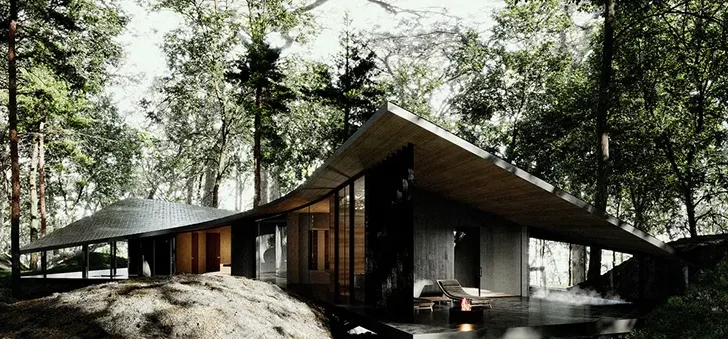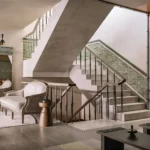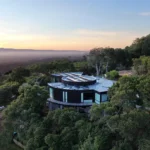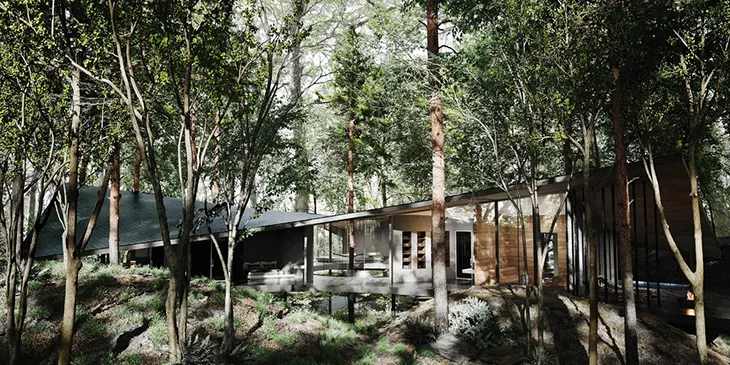
In the foothills of Mount Asama, where forest thickets and volcanic terrain meet, New Delhi-based studio Inspatia has envisioned Forest Within, a residential retreat conceived as a contemporary meditation on traditional Japanese architecture. Currently unbuilt but fully realized in design, the 388-square-meter project engages the site without dominating it. Raised lightly on steel stilts, the retreat preserves native vegetation and slope, opting for architectural restraint over formal intrusion.
HOUSING
The plan divides into three volumes, Living Hub, Wellness Retreat, and Sleeping Wing, arranged in a 120-degree Y-formation. This geometry doesn’t simply organize space; it communicates rhythm and equilibrium. At the center, a circular courtyard called the “Forest Valley” grounds the composition. Referencing Zen garden typologies, this open void creates stillness at the core of the house, both spatially and psychologically.
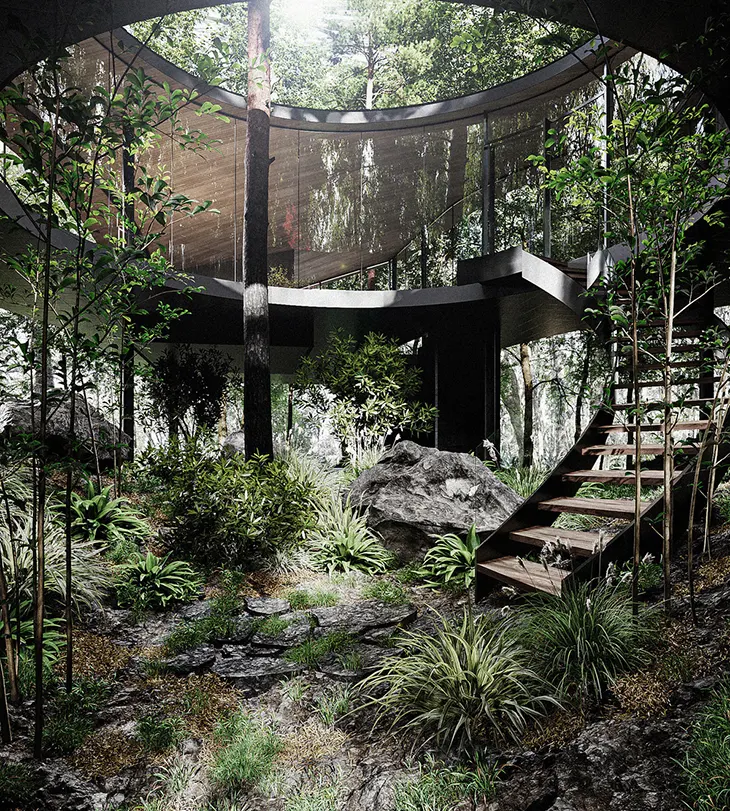
Inspatia’s design language is rooted in the Japanese concept of ma, the power of emptiness as space. The structure doesn’t fill the forest but opens into it. A corridor modeled after the engawa runs along the perimeter, acting as a shaded threshold that shifts with the seasons. Glass enclosures expand visual continuity while applying shakkei, the principle of borrowed scenery. Nature becomes both content and context.
The material palette is composed with care. Japanese cypress, basalt, recycled concrete, and clay tiles form a language that feels local without mimicking heritage forms. Each material contributes its own logic, thermal mass, acoustic softness, durability, and texture, while remaining visually quiet. The roofline curves in subtle response to snowfall and rain, echoing the gestures of traditional rural dwellings while operating within a modern envelope.

Programmatically, the house balances social and solitary uses. The Living Hub invites interaction through shared cooking and seating around a sunken hearth. The Wellness Retreat includes a private indoor onsen, constructed in dark concrete and charred timber, facing out toward the trees. The Sleeping Wing, oriented for privacy, maintains connection to the outdoors through framed terraces while using passive strategies to maintain comfort and seclusion.
What distinguishes Forest Within is its refusal to dramatize nature. There is no spectacle here, only calibration, of light, of movement, of proportion. Inspatia’s proposal is architectural in the strictest sense: the articulation of space, rhythm, and material that supports life without overstating its presence. Rather than produce a fixed image, the project proposes a shifting atmosphere shaped by light, sound, and time.
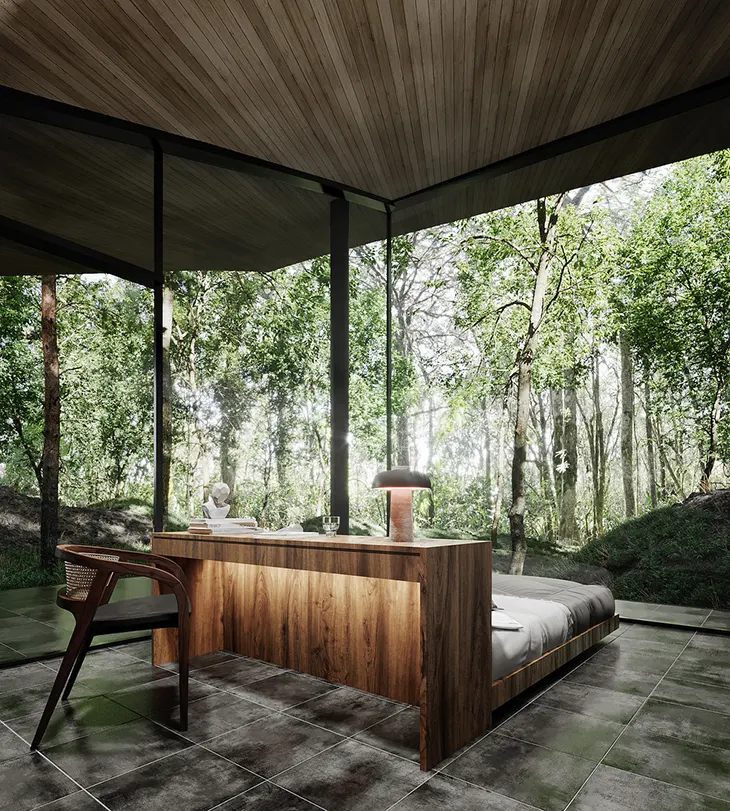
Forest Within doesn’t offer an escape from the forest, it becomes a part of it. The design slows the visitor down, invites observation, and leaves room for silence. In doing so, it aligns architecture with ecology, memory, and presence. Through careful spatial planning and ecological deference, Inspatia crafts a retreat that, while unbuilt, already feels rooted in place.
